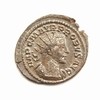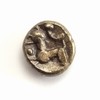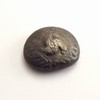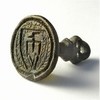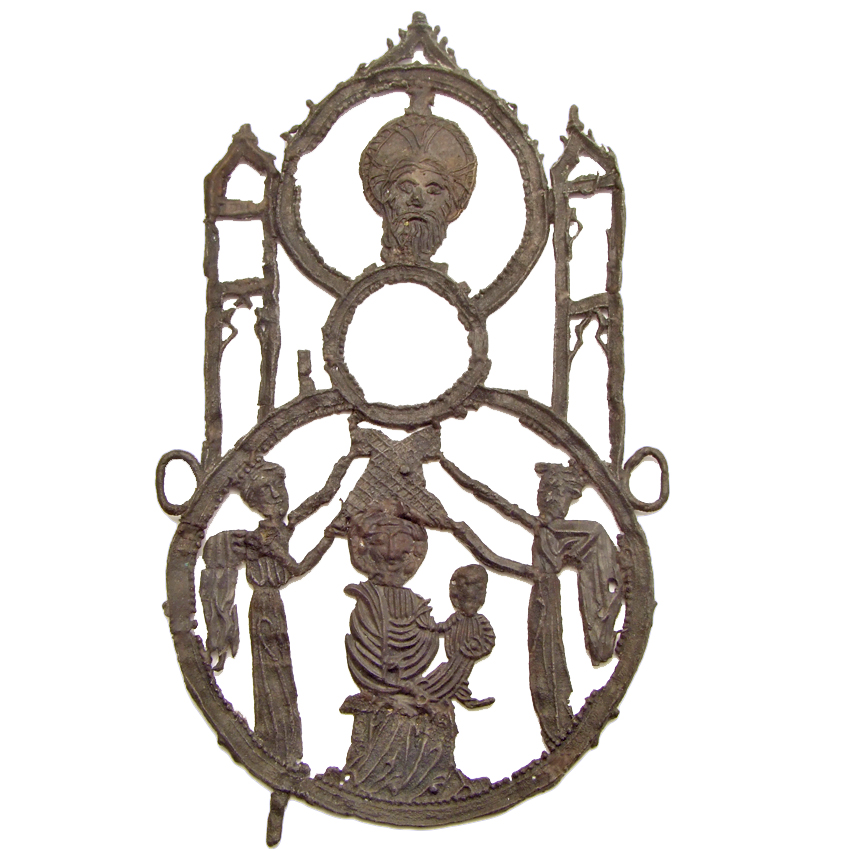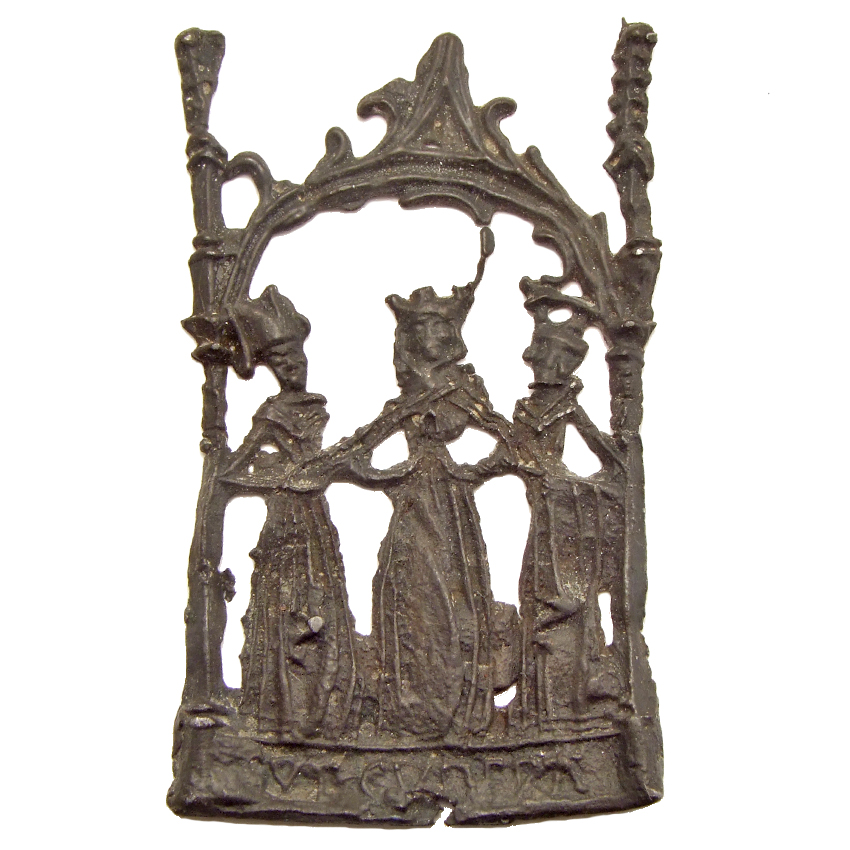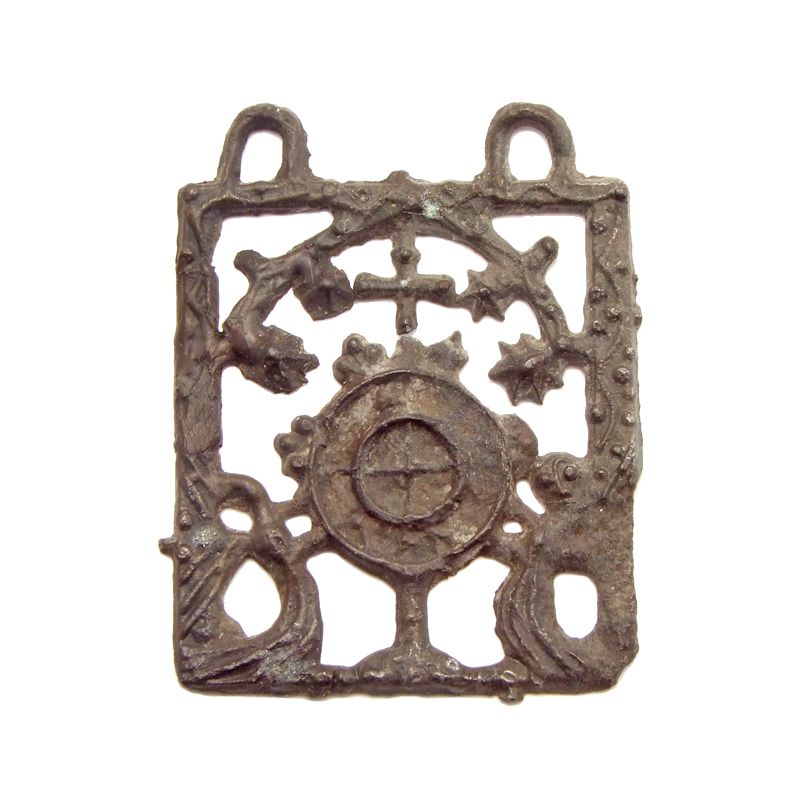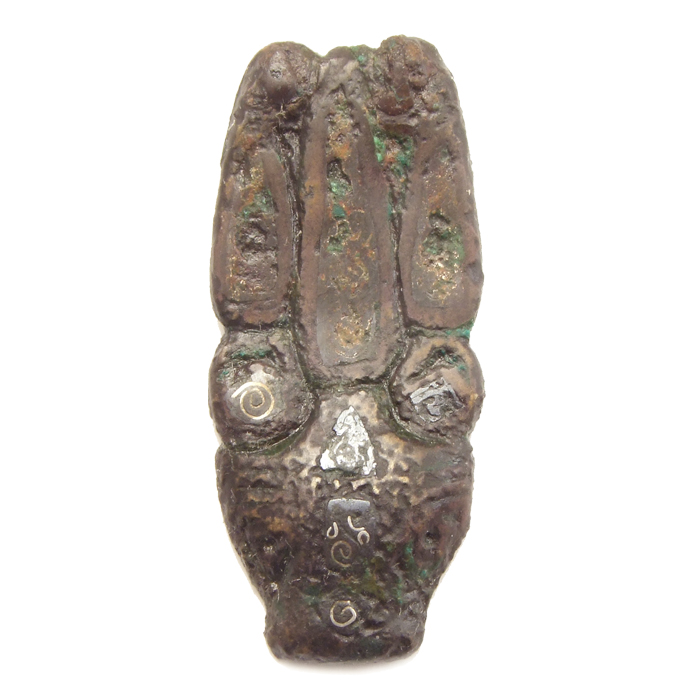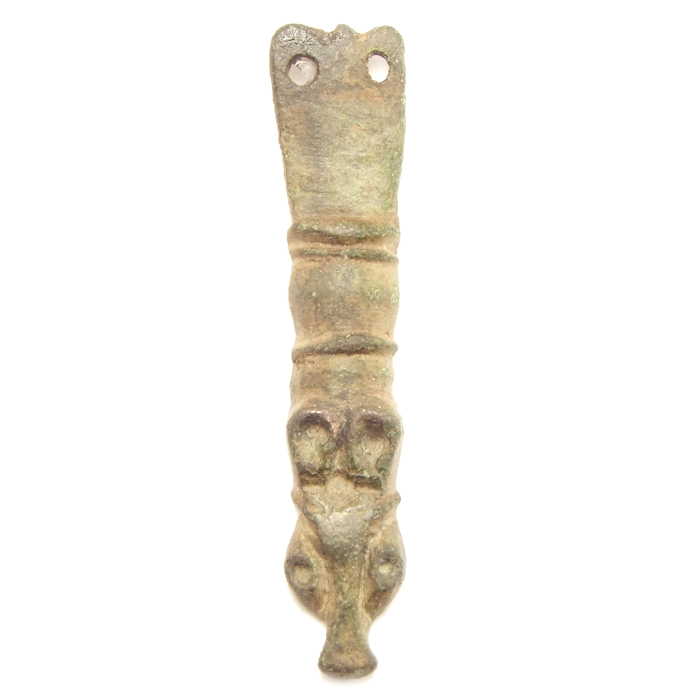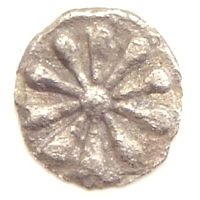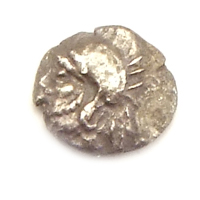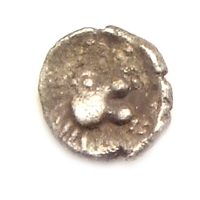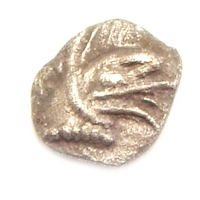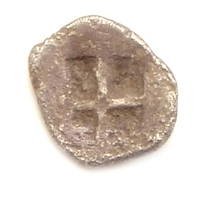- Home
- Historical info
- Glossary
Glossary
AGNUS DEI
The Agnus Dei (Latin for "Lamb of God") is a visual representation of Jesus as a lamb. In the Middle Ages the symbol of the Lamb of God was widely used, e.g.: paintings, sculptures, stained glass windows, seals, jewellery, pewter badges. It can be shown with or without a halo and appears in several postures. Most notably are:
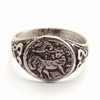 Silver engraved ring with Lamb of God
|
|
ANTONINIANUS
A Roman coin, introduced by Emperor Caracalla in early 215, initially made of silver and valued at 2 denarii. As silver bullion was in short supply, each successive issue contained less silver and more bronze. By the late 3rd century Antoniani were almost entirely made of bronze and finally ceased to be used by the end of the 3rd century. It is not known what the coin was called in antiquity. The name antoninianus was given by modern numismatists because of an erronous association, but since then the name has stuck.
Because of this gradation in silver/bronze content we classify (Specifications - Material) each antonianus both silver and bronze. When searching the website using the filter all antoniani will be shown with either bronze or silver.
View more Antoninianii on our Webshop or Archive
|
BILLON
An alloy of silver and bronze (which is a mixture of copper and tin). The percentage of silver determines whether a coin appears to be made of silver or bronze. Celtic potins are a typical example of coins made of billon.
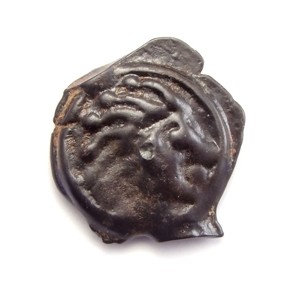 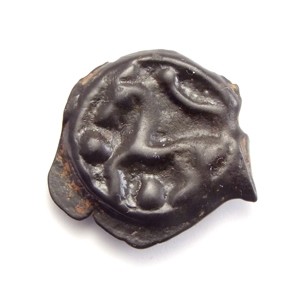 |
Example of a Celtic potin from Northwest Gaul
Obverse: Stylized head right with 6 strands of hair
Reverse: Stylized horse galloping left, 2 pellets
|
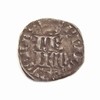 |
Billon coin,
France, double parisis, Philippe VI de Valois
|
ELECTRUM
An alloy of gold, silver and a small amount of copper. Sometimes small traces of platinum or other metals can be found. Depending on the percentage of gold and silver the colour can range from pale to very bright yellow. Electrum was sometimes preferred over gold because it was harder and more durable.
Currently available on NumisAntica, more details can be found at:
|
|
Example of a rainbow cup (regenboogschoteltje) from the Bataviri (Rhineland).
|
HOUSE MARK
In the Middle Ages traders and merchants were not allowed to bear arms. To identify themselves or mark their products they adopted their personal mark. These marks must be easy to cut or engrave. Since many people were illiterate the design must be distinctive and easy to remember (functional). The merchant's marks or house marks were often passed on to the next generation with a small addition or difference in detail to distinguish between father and son.
As the merchant class increased in wealth and status, the marks began to appear in shield-shaped frames. They are frequently found on seals, stained glass, brass and stone and on tombstones.
|
Medieval seal with house mark
|
HYPERPYRON
The gold solidus was a standard in international commerce until the eleventh century, when it began to be debased under successive emperors, beginning in the early 11th century.
Under Alexius I Comnenus (1081–1118) the debased solidus was discontinued and a new gold coinage was introduced, commonly called the hyperpyron. The hyperpyron was slightly smaller than the solidus.
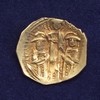 |
JETON
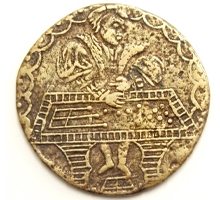 |
Jetons de compte (rekenpenningen) were used across Europe from the 13th to the 17th century by merchants and government officials to make financial calculations. They were used on lined boards, similar to an abacus.
With the introduction of the decimal system (including zero) and the availabilty of paper and pen this system was replaced with written calculations.
On the left an example of a Nuremberg jeton with moneychanger and counting table (Germany, mid 16th century).
Jeton de compte dit “au maître d’école” ou “au comptable”
More jetons available on NumisAntica here: Jetons
|
PILGRIM BADGES
During the Middle Ages it was customary for pilgrims to bring back proof of their pilgrimage. As proof of their voyage to a particular shrine they returned with a badge, usually made of lead or pewter.
Most pilgrim badges show some figure or device, identifying it with the name or place of pilgrimage. Common shrines were at Santiago de Compostella (Spain), Canterbury (England), Cologne and Aachen (Germany) and of course Rome and Jerusalem.
|
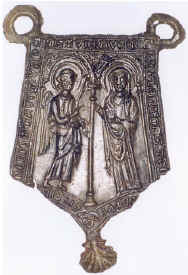 A pewter badge from Santiago de Compostella with its 'trademark scallop'
|
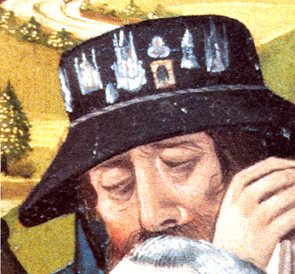 A well known image from a pilgrim with his hat full of pilgrim badges
|
When pilgrims returned, they proudly wore these badges fastened to their hat or cape. Examples can still be seen in some Medieval stained glass windows, drawings or paintings.
As well as being 'proof' of having made a pilgrimage (early souvenir), they also attached special value to the badge. Pilgrims believed that a badge that had touched a certain relic would offer protection against danger or sickness, or offer assistance that was needed (conception, childbirth, etc). The reason for a pilgrimage could vary from a punishment or doing penance to a special thanks or praying for help from a Saint.
|
Some examples of some pilgrim badges that have been sold here recently:
|
STRAP ENDS
In Northern Europe strap ends have been used since Roman times and remained popular among the Anglo-Saxons, Vikings, Merovingians, and Frankish tribes. They were attached to straps to prevent them from fraying or curling (functional), but also had a decorative appeal as their added weight made them hang down vertically. There is a great variety of shapes and decorations, some have very intricate patterns or zoomorphic designs. They can range from the fairly plain to very ornate pieces, made from silver or silver-gilt.
|
Currently available: Anglo-Saxon Trewhiddle zoomorphic strap end with triangular and spiral patterns in silver
|
Anglo-Saxon zoomorphic strap end. The abstract animal-head terminal has large and distinctive rounded ears and is ending in a pronounced extended snout. View all current examples of strap ends.
|
STYLUS
|
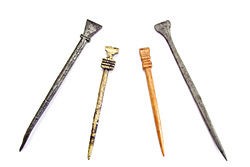 |
A stylus is an ancient writing instrument, used for writing on wax-tablets. The flat shaped terminal was used for erasing errors. In Ancient cultures, styli were already used by the Mesopotamians and Egyptians. The material could be sharpened reeds, bone or metal.
In Western Europe styli were widely used until the late Middle Ages. It was a great tool for learning purposes, notes or mistakes were easily erased.
|
|
The stylus was used untill the use of paper became common. During the 15th century the wax tablets disappeared completely from daily life. Writing on slates was still very common until the early 20th century.
Currently available on NumisAntica: Writing tools and documents
TETARTEMORION
Tetartemorion is a denomination of a small silver coin from Ancient Greece. It was struck in Athens and severall small city-states and held a value of 1/4 obol.
Examples of a few tetartemorion that are currently offered on NumisAntica
|
|

